Let’s face it, nothing’s more satisfying than cranking up the volume of your guitar amp plug-ins. Especially if it’s a valve one, in that case, you’ll most likely need to get loud! But do you have the knowledge and the equipment needed for recording guitar rigs and plug-ins?
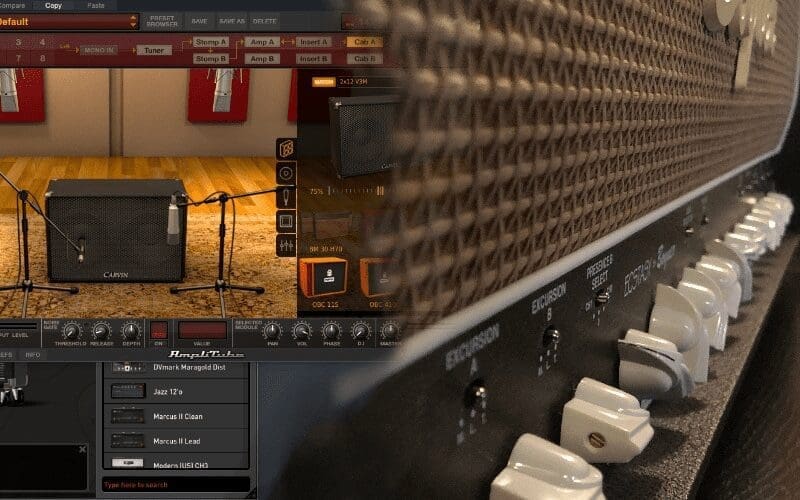
Nowadays, technology allows you to play with endless equipment. Plug-ins are crazily realistic, but are they good enough to replace a real amp when recording guitars?
Let’s discover the pros and cons of both solutions and find out which one can be the better fit for you!
What Is A Plug In? How Does It Work?
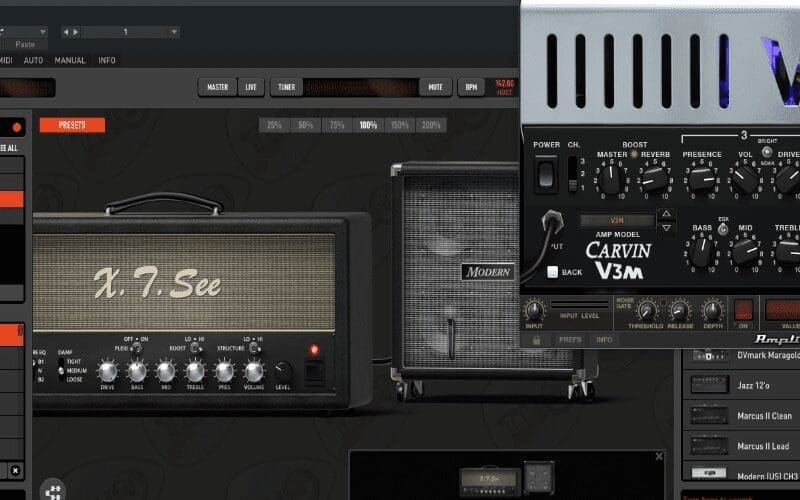
Likeliness is, if you’re reading this you probably already know what a guitar amp is, and most likely you also know what a plug-in is too, but let’s have a brief chat about it anyway.
In simple words, a plug-in is software that processes the signal of your guitar. This connects to the computer through an audio interface, emulating the sound of your amp choice.
If you are approaching them for the first time you’ll realize that the same plug-in will be available in different formats. The software developers will most likely lead you to choose the right one for your system, however, here’s a short but necessary introduction to the most popular formats.
Audio Units (AU)
Audio Units are in the MacOS format. You won’t be able to use them on Windows, so they will be your choice with Logic Pro (but also other DAW like Studio One, Reaper, or Ableton Live, just to name a few of them!)
Virtual Studio Technology (VST)
Virtual Studio Technology will likely be the most compatible format that you can use on both Windows and MacOS. You’ll easily find VST3 and VST2, where Version 3 is the most updated one.
Avid Audio eXtension (AAX)
Indeed, this is the Avid proprietary format. To be used with Pro Tools, traditionally on MacOS only, but for some years also available on Windows.
32bit vs 64bit Plug-in Versions
The 64bit is an updated version of the 32bit plug-in, but it’s not referring to the audio conversion, but the capability of the processor. Usually, you won’t be wrong about making sure your plug-in and DAW are using the same software architecture.
Plug-ins
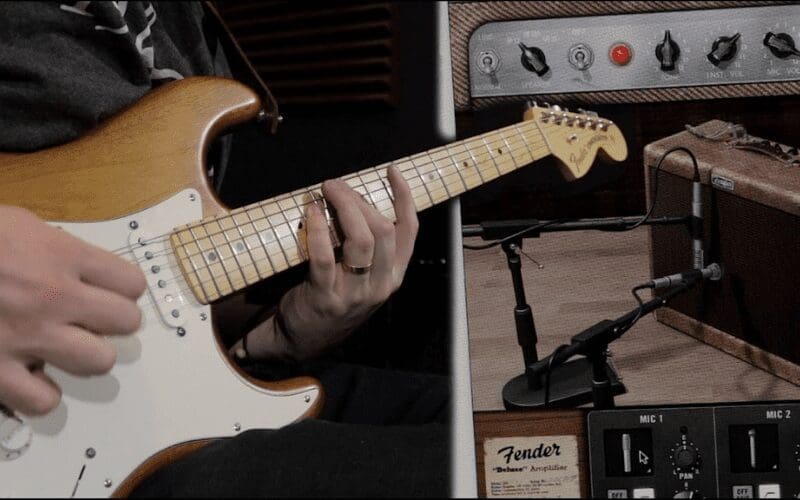
Luckily for us guitar players/music producers, there are a lot of choices, some plug-ins are even free for recording guitars! But in this article, we will be talking about the following 3:
These are a few popular favorites in the guitar world. Now let’s talk about their pros and cons!
Pros
Endless Sound
Even if you don’t own the full versions, most plug-ins will grant you enough options to find the sound you are looking for, with endless combinations. Heads (or combo), cabinets, microphones, speakers… All that gear can be chosen and combined, with endless possibilities! Sounds like Paradise, right?
Sharing
Some plug-ins allow you also to create and share your sounds with other users, which means that you’ll also benefit from the sounds of other skilled musicians. Sometimes even professional and famous ones! You can usually find this at PositiveGrid ToneCloud also, just check it out and you might have fun with it!
Versatility
If you’re into the older style, you will probably place a real microphone in front of the speaker of your real amp, and that’s the way you start recording. Maybe your performance is amazing, but during the mix, you realize that the sound is not as good as you wanted. Maybe a different timbre would have been a better choice.
With plug-ins, the sound of your guitar is recorded ‘clean’ through the audio interface. In this case, the virtual amp (and all of its options) is processing the sound after recording; you can also change it endless times afterward. You can start playing your guitar solo with a Rectifier, but replace it in a second with a Bogner Ecstasy – just as an example!
Faster Productivity
Even if your ‘real gear’ setup is almost always the same, it can often happen that you will need to connect and disconnect various things. For example pedals, or a different amp or cabinet. This is pretty time-consuming. With plug-ins, you can do all those things and many more with just one click. Last but not least, you can compare different equipment in just a few seconds; happiness for your ears and brain!
Cons
Latency
The signal of the guitar, once converted by the audio interface, will be treated by the plug-in before getting heard by your monitors. This is going to take a little delay between the moment you’ll be playing the guitar to the moment you’ll be hearing it. Pretty annoying if you ask me!
Anyway, audio interfaces are usually designed to allow you to get rid of them with a ‘low latency’ function. You’ll have to deal with setting into your DAW as well and sometimes the process is not that intuitive, especially if you are new to these things.
Despite all this, with some research, you can definitely make it work. Usually, once the setup is done you most likely won’t need to make it twice. Of course, you’ll also want to invest in the best audio interface possible, according to your budget.
CPU Stress
Useless to say that plug-ins are CPU-consuming (some brands more than others). While it’s fun using (and abusing!) fancy stuff, you’ll also risk putting your system under stress.
A smart and wise, although sometimes limited use of plug-ins is not necessarily a bad thing. You’ll force yourself to be creative and perform at your best. This results in saving tracks and making sure they are well organized. But yet, you’ll have to pay attention to your CPU health, let it be your best friend!
Too Much Choice
This is a controversial one! I’ve been there more than once, at some point having too many options can be quite confusing.
What if you had the chance to try a full arsenal of guitar amps and switch them in seconds?! You’ll be spending hours looking for the best sound possible, fun but a little bit unproductive.
Also, too much choice will lead you to spend less time exploring the full functionality of that particular amp model, since switching will be just easier and faster. And you’re old school like me, you’ll record your guitar twice, left and right channel, so, double mess! After a while, you’ll risk losing focus on the sound you really need and easily find yourself dissatisfied (because for sure, you could have been finding a better sound, right?!)
Then you will also want to add effects and explore the right cabinet to use, then also try customizing the speakers… good luck!
Real Guitar Amp Plug Ins
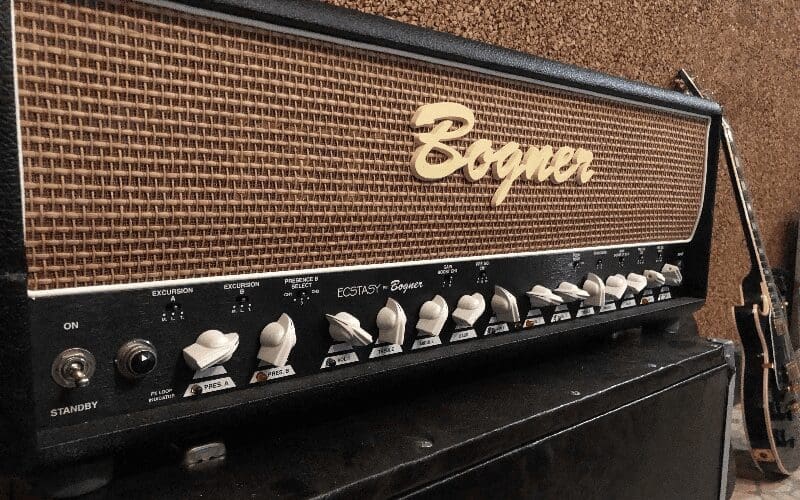
Pros On Guitar Amp Plug Ins
CPU Happiness
A benefit of a real amp is that you’ll have a pretty happy CPU on your system, at the end of the day, you’re just recording an audio track.
You’ll have more tracks available before getting too worried about having your PC/Mac under stress.
Volume
This is both a pros and cons thing. While it’s hard to deal with loudness, the pleasure to hear your amp screaming loud is priceless, especially if you are a rocker!
Better Performance
When you are using real amplifications, you somehow feel forced to pay even more attention to your performance since you’ll have fewer chances to make so many changes later. In one way or another, you’ll feel like having a different approach, which results in a better performance.
Cons On Guitar Amp Plug Ins
Once Recorded, It’s Recorded
There’s no coming back – that’s the sound. And if you don’t like it, you’ll have to find a better setting for your amp or change it and record it again. Bit of a pain, but all part of the process!
Setting Up Gear
Placing a microphone is an art. While you can go safe placing the classic SM57 in front of your cabinet, its positioning can dramatically change the recorded sound. Place the mic in front of the center of the speaker and you’ll have a brilliant sound, move it on the border and you’ll have a more middle-range sound.
You need to have a clear idea of the sound you need before you start recording because you’ll not have so many chances to change it later. Yes, you can equalize and filter, but there are fewer options than with plug-ins.
No Happiness For Your Wallet!
Real gear is expensive. Imagine having to buy heads, cabinets, microphones, etc… Well, super satisfying and a dream come true for most of us, but I guess not for everyone. Unless you are a lucky one with an endless budget, in that case… good for you!
Volume
As mentioned before, this is both a pros and cons thing.
If you are recording a valve amp, you’ll be tempted (and it would be recommended also) to get loud to get the most power out of your amp.
But it also depends on your environment. If you are living in a detached house or a quiet neighborhood, you’ll most likely not have any problem raising the volume. But if you are living in an apartment, I promise you’re going to have some problems (unless your neighbor is a metalhead!).
Our Conclusion On Guitar Amp Plug Ins
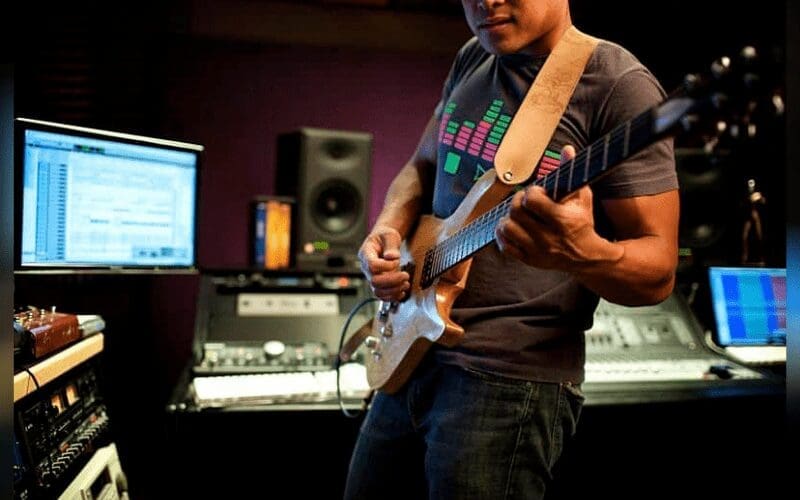
As you can probably guess, there’s not a real winner. We think it’s really up to you and what you need when it comes to recording guitars, and recommend doing some research before you decide.
If you don’t have any deadline and you have your sound, you might just enjoy the process. While if you need to be faster and need to be productive, maybe you want to consider some more options – the use of plug-ins might be your choice.
So, here’s the final question: do plug-ins sound as good as real amps?
Plug-in’s accuracy and quality, nowadays are crazily impressive. Most of the time, your sound won’t change that much, regardless of what your choice is. Your sound is in your brain and fingers, no matter where it is coming from.
We encourage you to use both of them and experiment as much as you can until you find the best solution for your needs. But most importantly, we encourage you to have fun with it! Finding your favorite equipment is all part of the process of being a musician.
If you find an instrument you love and that suits your needs, you’ll find the time spent choosing was well worth it. If you feel you want to experiment more with different instruments but can’t get access to them – There’s loads of great software available to you, that could help you pick! BandLab is an awesome piece of musical software that lets you play around with up to 7 different virtual instruments, including but not limited to:
- Guitar
- Bass
- Drums
Good-luck with making your choice!










